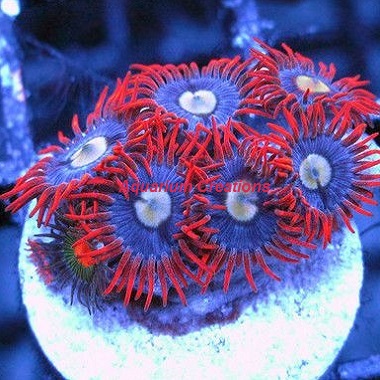Alpha and Omega is a great Zoanthid polyp with Zodiac Blue going along with the White Sands for a shocking look that can't be overlooked in the reef tank. The Alpha and Omega Zoa Polyps are hardy, does well in medium to low light, and is a good grower when water parameters are stable. Like all of our polyps they are aquacultured specimens, many generations removed from the original wild starter colonies.
Keeping your parameters at the standard level will help these corals stay happy. Set your salinity between 1.024 and 1.026. Your pH should range around 8.3 and your temperature should stay between 77 and 82 degrees Fahrenheit.
Aggressiveness
They are a not an aggressive coral.
Water flow
They do well in fast to slow water flow.
Lighting
Does well in medium to low lighting.
Placement
May be placed anywhere which provides the required water flow and lighting level.
Diet and Feeding
It is recommended to feed zoas directly. Zooplankton and cyclopleeze we highly recommended. Each zoanthid is different, so testing different kinds of food is highly recommended. The thing that makes these animals so easy to care for is their high tolerance for dirty water. While it is important to make sure that any tank is always clean, zoas will not be immediately harmed by dirty water. Something important to keep in mind when introducing zoas into a tank is that they multiply rapidly. In fact, zoanthids have been known to suffocate tank mates due to their sheer numbers.
Caution
One of the most fascinating aspects of the zoanthids is also one of the most deadly. Palythoas secrete a poison through their mucus known as palytoxin. Palytoxin is extremely dangerous, and it affects humans in a very adverse way. What this toxin does is mess with the cells of the heart, destroying their ion regulatory systems. The toxin enters the system via open wounds, ingestion, and injection. If there is no open wound, the skin becomes very irritated. Because of the lack of treatment, what is highly recommended with these creatures is to wear protective gear, such as gloves and goggles, and to use tongs which will help distance the creature from any contact with the skin.
|



